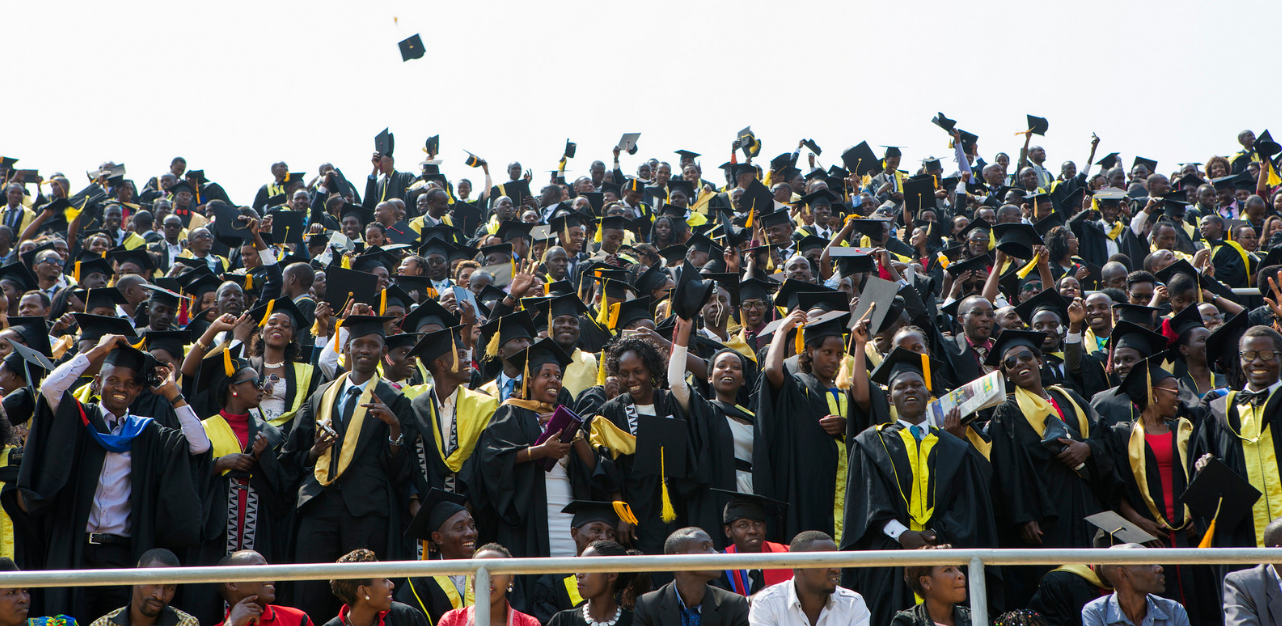
University of Rwanda students at a mass graduation
The University of Rwanda has increased the intake of science students pursuing Science, Technology, Engineering, and Mathematics or STEM to 75% for the previous academic year, and only 25% of students admitted to study arts and business courses.
STEM students have increased from 48% to 75% since 2019, but the government targets to increase it further to 90% in the next ten years.
“The number of students admitted to study science courses keeps increasing. The aim is to support government objectives of transforming the country’s economy through Sciences,” Ignatius Kabagambe, head of corporate communications at University of Rwanda (UR).
UR admitted STEM students in Colleges of Agriculture, Animal Sciences and Veterinary Medicine, Science and Technology, Medicine and Health Sciences, and the College of Education.
The new population of STEM students at the University of Rwanda was announced during the handover ceremony on 12 February 2021, when Prof Alexandre Lyambabaje, the newly appointed Vice-Chancellor of University of Rwanda took over from Dr. Papias Malimba Musafiri who was the acting vice-chancellor.
To increase the number of STEM students, the government proceeded by awarding more scholarships to applicants with Science subjects.
According to data released by the Higher Education Council (HEC), at least 64.4% of the students who qualified for government scholarships for the academic year 2019- 2020 pursued STEM courses.
Some 9,968 students were sponsored by Government where 7,640 were admitted at UR and 2,328 others at eight Integrated Polytechnic Regional Centres (IPRCs).
With the constant increase of students in STEM, the remaining 25% of the students have been named ‘NON-STEM’ which has, according to them, become a scornful name to some extent.
“We pursue different courses depending on our objectives and how we want to shape our future. It doesn’t make sense to me, when you call a certain group STEM or NO-STEM when everybody’s target is Excellency,” Eric Muhizi, a UR student suggests.
Muhizi added that there is no one who is ‘big or small’, students should be classified depending on their academic courses.
Mbabazi (other names held on request) studying public administration at the University of Rwanda, Huye district said that the STEM students consider themselves to be superior or more important than the rest.
SHe argued that University should consider balancing the population while carrying out admission processes.
Speaking about the ‘non-stem word, Kabagambe said that the university and the Ministry of Education are collaborating to replace the non-STEM word with another word that suits their courses.
“STEM is considered to be the future of innovation and improve the social-economic status of the country. There is no doubt about that. But art studies are also much needed, there is no development without them,” Kabagambe said.
Kabagambe said that all these courses whether arts or sciences serve developmental purposes, they are complementary, there is no superior or inferior and the University officials have considered replacing the word ‘Non-stem’ to Art and Business students.
For this academic year(2020/2021), 10,000 students were admitted to study at the University of Rwanda. However, Kabagambe said that like the previous academic year, STEM students are more than art and business students and there are no expectations of balancing the population because of the government objectives.
The STEM subject’s promotion efforts have become visual in the country with also various secondary schools launching Zorabot Robotics programming, science experiments simulations or virtual labs, Minecraft learning through games, and virtual reality demonstrations.

